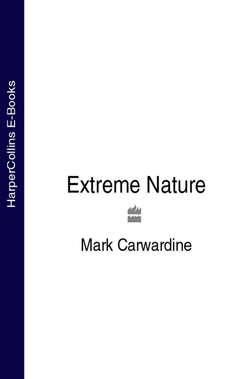Читать книгу Extreme Nature - Mark Carwardine - Страница 26
Most formidable killer
Оглавление| NAME | killer whale, or orca, Orcinus orca |
| LOCATION | oceans worldwide |
| ABILITY | preying on the world’s largest animals |
© Mark Carwardine
Anything that can attack and kill the largest animal that ever lived, the blue whale (see), has to be the greatest predator ever (apart, of course, from Homo sapiens). But blue whales are peaceable creatures with few defences apart from size, and so maybe the killer whale qualifies better on the grounds that it can kill the great white shark. At a maximum length of 9m (29ft 6in), killer whales are the largest members of the dolphin family and among the largest of all predators, but their real edge is that they’re pack hunters and work together to subdue large prey.
Several distinct forms are known – residents, transients and offshores – each of which differ significantly in appearance, behaviour, group size and diet. The transients are the ones that tend to specialise in larger prey but, perhaps surprisingly, they travel in smaller groups than their fish-eating relatives: fewer than six or seven is fairly typical (fish-eating groups often comprise 15–30 whales). The transients devise different, often ingenious, hunting techniques for different prey. In the Antarctic, for example, they will tip seals and penguins off ice floes and into the mouths of their group-mates; and in Patagonia, they beach themselves to grab sealion pups.
When Basque whalers saw killer whales feeding on the carcasses of dead whales, they called them ‘whale killers’, and the name stuck. Many people prefer to use the more politically correct name, orca, but in Latin, orcus means ‘belonging to the kingdom of the dead’, and so it’s not much better.
